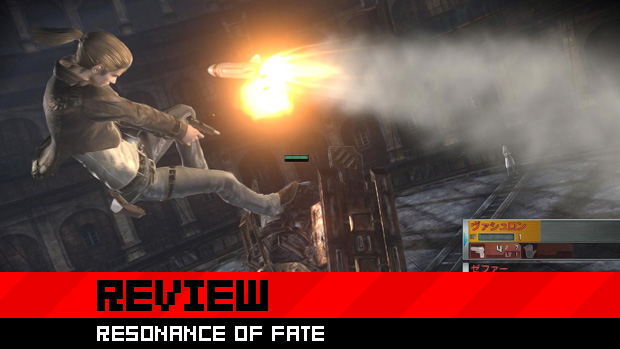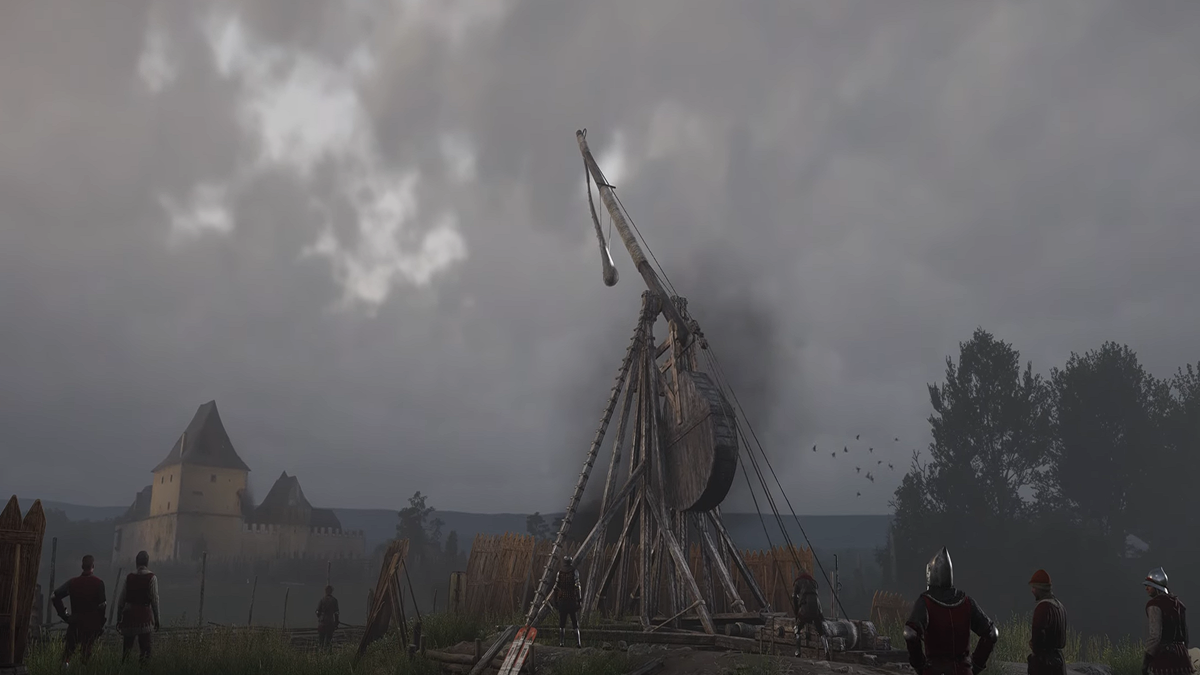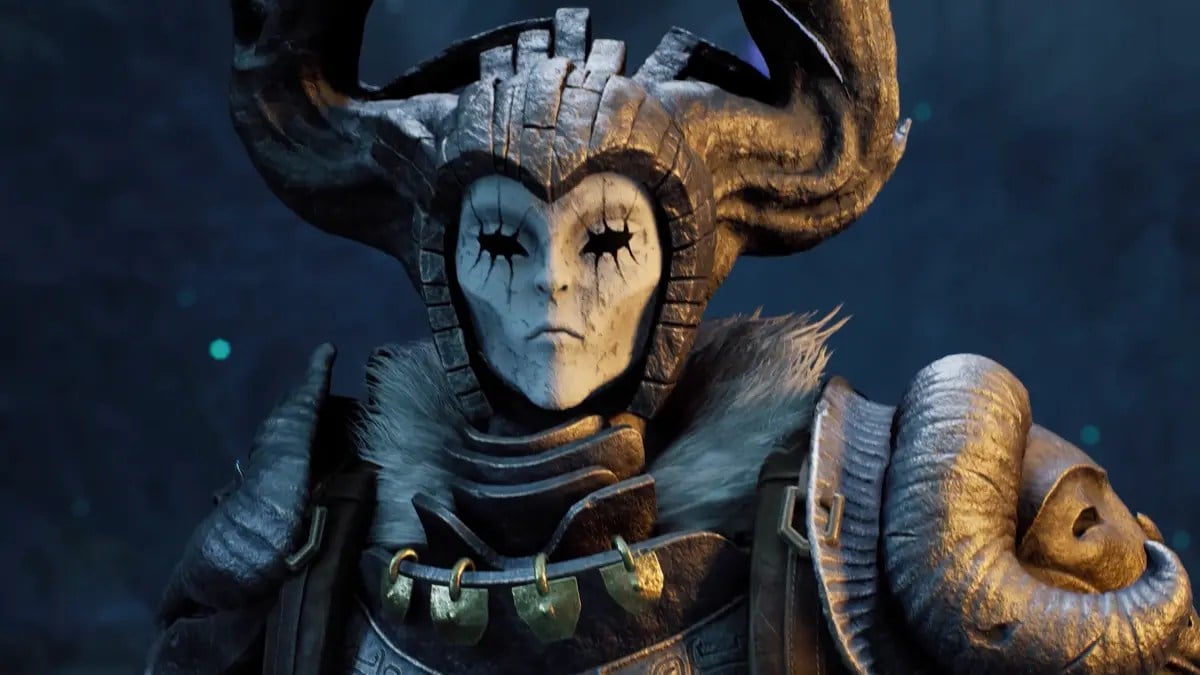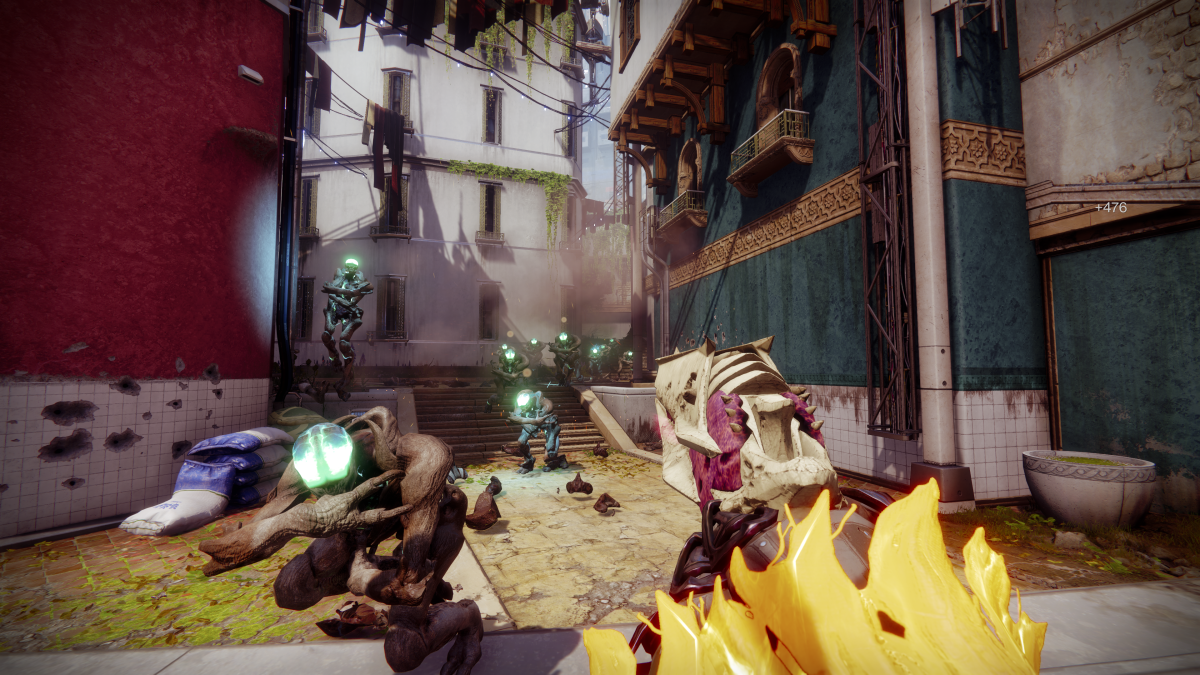On the face of it, Resonance of Fate appears to be a JRPG thoroughly invested in the unconventional. Yet, compared to some of its contemporaries, the game’s design philosophy is decidedly conservative. It retains, even emphasizes features that other titles, both western and Japanese, have been inclined to pare back or otherwise streamline in favor of creating a more accessible, storytelling-oriented experience.
Ironically, that conservatism is part of what makes the game as satisfying and enjoyable as it is to play, combining a near-obsessive focus on mechanics with an uncommon aesthetic to produce an experience that manages to feels refreshing and new while still retaining a recognizable, “old-school” core.
Read on to see how Resonance of Fate avoids getting one jammed in the chamber.

Resonance of Fate (PlayStation 3 (reviewed), Xbox 360)
Developer: Tri-Ace
Publisher: Sega
MSRP: $59.99
The Earth is uninhabitable, and human civilization survives only around and within a gigantic clockwork tower, Basel. The age and origins of Basel itself are a mystery, but everyone knows that the tower is slowly beginning to malfunction and wear down. The story follows the exploits of Vashyron, Zephyr, and Leanne, who live in Ebel City, on Basel’s fourth level. Working as mercenaries, they run errands and do odd jobs for the Cardinals, a group of eccentrics living at the highest levels of Basel society.
That’s about as far as Resonance of Fate goes with regards to opening premise. There is no imminent threat or world-ending crisis to be averted. Instead, everyone’s just focused on getting by in a world that’s slowly decaying.
The opening chapters deal quite literally in a series of fetch quests, with the trio picking up one mundane object or another and trucking it over to the local noble’s estate. Of course, things are never quite as they seem. For example, task to bring a bottle of wine from the icebox turns out to be a dangerous trek through portion of Basel frozen over by a dilapidated cooling system.
The languid pacing and the attitude that nothing is ever exactly as it seems permeates the whole game. Early on, the cast conforms to the expected anime archetypes. Vashyron’s the hornball war veteran, Zephyr’s the sullen teenager, and Leanne is the peppy girl. But each successive chapter builds a little bit on the characters’ pasts and personalities, presenting questions for the player to wonder about as the story ambles along. Why did Leanne try to commit suicide in the opening FMV? How was Vashyron involved in a conflict that blew up the town of Lucia on level six? How did they all meet in the first place? And so on.
Resonance of Fate builds its world mostly through inference and implication rather than exposition. Things get more “serious” in tone into the latter half of the game, but with the main plot being somewhat threadbare, it never really ascends to the kind of epic scale one would expect from the genre. In fact, some core elements are spoiled during the main menu FMVs, so be warned if you want to idle on those screens while you settle into your chair or something. On the other hand, the game doesn’t take itself too seriously, and it all balances out in the end. Cartoonish slapstick gags punctuate and help defuse some of the melodrama that would otherwise risk making character development tiresome. There’s even a Christmas chapter!

With the story as light as it is and the characters at least initially uninteresting, Resonance of Fate has chosen to weigh most everything on the appeal of its mechanics. And boy does it do so! The game’s battle system is one of the most complex and arbitrary constructions I’ve ever had the pleasure of learning to play.
The system itself seems simple enough at first. Characters and enemies take their actions in quasi-real-time. An action gauge depletes as players move around, and a turn ends once a character starts “charging” an attack. Stacking multiple charges increases damage and applies status effects.
But one can’t just shoot a monster and expect it to take damage. No, for there are two damage types in the game. The first is “scratch” damage, which is dealt by machine guns. Scratch damage accumulates quickly, but can’t actually kill anything. Killing things requires that the scratch damage be converted to “direct damage”, which can be done by pistols and grenades. Which means that the best way to dispatch an enemy is to soften it up with scratch damage from a machine gun, then finish it off with a pistol or grenade.
And it’s not over yet, because Resonance of Fate‘s party-piece is here, called the “Hero Action”. Hero Actions are the stuff of screenshots and promotional videos, involving a character running down a straight line, flipping, jumping and shooting enemies in as dramatic and gratuitous a manner as possible. Hero runs slow down time and speed up charge times, making them the only way to maximize the effects of a given turn. The gun balletics on display during a typical Hero Action are enough to give pause to the likes of Bayonetta or the Devil May Cry series, what with sky-high leaps, pirouettes, dashes and slides and bounces.
But wait, there’s more! Plotting a Hero Action to run between two other characters builds up “Resonance Points”, which can be used to trigger “Tri-Attacks”, which send all three characters on simultaneous Hero Actions, running along the points of a triangle, all the time jumping, shooting, charging, and doing myriad ridiculous things.
And that’s just the basics. Bringing in status effects, “gauge-breaking”, armor pieces, elemental attacks, air-juggling, charge disruption, and all sorts of other things, the result can be hideously complex.

Keep in mind that at the beginning I said the system was pleasurable to learn. It’s quite a bit more tactical than the acrobatics might let on. Positioning Hero Actions and Tri-Attacks to hit just the right length and pass by as many enemies as possible, taking care to conserve action points and disrupt enemies targeting allies, and husbanding resources to take on bosses that won’t go down quickly, results in a system that demands proficiency as opposed to endurance. Even switching targets to maximize damage during a Hero Action benefits from the “twitch” skills more commonly developed playing FPS or other action games.
It’s just a shame that Resonance of Fate doesn’t make that kind of proficiency as easy to acquire as it should be. That’s why I cannot emphasize enough that anyone wanting to play the game go through all of them to get the core concepts down pat. Only then do the subtleties start to stand out. If there was ever a JRPG that could have used more hand-holding, it’s this one.
Thankfully, a series of convenient features make losing a much easier pill to swallow, though. All battles can be retried at any point for a small fee, and players can even opt to pay a princely sum to restart with full health and hero points. The ability to gather and deploy “energy stations” – portable save/rest points – also makes exploring the map, gathering resources and cash, and dealing with random battles much less tiring. A large optional install significantly reduces loading times, too.
Besides battle, Resonance of Fate offers up a few extra mechanical tidbits for lovers of traditional JRPGs. Yes, there is a world map, and exploring it consists of laying down “energy hexes” on a grid to clear out areas and make them accessible. Towns need to be unlocked by covering them with colored hexes, which drop off select enemies. Clearing out the map for treasure and linking “terminal” locations to add passive effects to battle (such as experience multipliers) constitute most of the game’s exploration element. The actual “dungeons” are really just sets of linked battle zones.
Guns can be customized with parts like scopes and handgrips in a tetris-like fashion, adding and refining attributes like ammo count and firing rate, but outside of that, character progression and tweaking is somewhat muted, with leveling up determining little more than a character’s total HP and carrying capacity.

With new equipment and guns being relatively rare, the traditional fixation with loot might have no place to go, but Resonance of Fate handles that potential failing by mutating “loot lust” into “fashion lust”. The trio can spend their rubies on range of trendy new outfits, some of them created by real-life Japanese fashion designers. And they’ll spend a lot of rubies. At points in the game I found myself struggling to choose between buying a new gun…or buying a stylish pair of pants. I’m not kidding. Oh, and there’s an achievement/trophy for spending half a million rubies on clothing.
The clothes on the rack do look like the sorts of things an actual (if excessively pretty) human being might wear, rather than an arrangement of objects meant to inspire cosplay. Better still, all of it is visible in cut-scenes, which makes being stylish all the more meaningful. And hilarious. Nothing sabotages a melodramatic gunfight quite like a shirt with a big cheeseburger drawn on the front.
The colorful clothing helps offset the game’s otherwise limited palette, which is in part due to the clockwork, faux-Victorian setting. While detailed, most environments alternate between concrete gray and brick red. And with sidequests that intentionally have players moving about all the levels of Basel, seeing the same battle zones over and over can feel repetitive.

Ultimately, Resonance of Fate stands as a great option for JRPG fans who feel like games have been getting a little bit too streamlined, unwilling to force their players to actually learn to play. It leverages both the JRPG penchant for absurd spectacle and its obsession with arcane mechanics to create an experience that feels both conservative and progressive, hitting nearly all the desired bullet points (no pun intended) while still keeping things fresh.
About the only desire it does not quite satisfy is the one for a heavy, involved plot. Gamers who play solely to invest themselves in the story and setting, who treat battle as a means to an end, may be left cold, unable to fully justify all that learning and fighting they went through to get to the cutscenes. This game is for the role-playing gamer who cares more about the “playing” than the “role”.
Score: 8 — Great (8s are impressive efforts with a few noticeable problems holding them back. Won’t astound everyone, but is worth your time and cash.)




